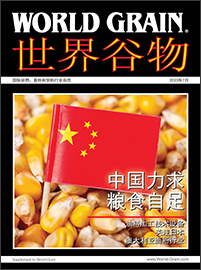KANSAS CITY, MISSOURI, US — Wheat flour is ubiquitous. It is something we simply take for granted, much like the air we breathe.
One of the many lessons learned during the COVID-19 pandemic is how valuable common, inexpensive, non-perishable food items such as flour can be during a crisis of this magnitude.
As we hopefully are starting to distance ourselves from the worst period of the pandemic and reflect on its impact with more clarity, the herculean effort of the flour milling industry — as well as other segments of the grain-based foods sector — should be commended. Having to improvise to produce and deliver this staple food product at a time when public health officials urged most of the world to “shelter in place” showed how creative and flexible the industry could be in the midst of a crisis.
Flour millers are known for their attention to detail and their preparedness for every conceivable scenario. Over the years, the International Association of Operative Millers (IAOM) has featured educational presentations on everything from how mills can maintain productivity in the aftermath of natural disasters such as hurricanes and earthquakes, to the challenges of operating mills in war-torn regions of the world. A list of best practices in the event of a significant global pandemic was never (to the best of anyone’s recollection) on the agenda, which is understandable since pandemics of this severity are extremely rare.
Despite not having a detailed pandemic playbook for flour production, was there ever really a doubt that the global flour milling industry would rise to the occasion? First and foremost, flour millers are top-notch problem solvers. In their daily quest to produce quality flour, they must overcome obstacles such as working with a substandard raw material, mechanical breakdowns, and countless other things that can go wrong during the gradual reduction process.
Flour millers tend to think like engineers. In fact, the industry includes a number of millers who started out as engineering majors before migrating to the milling industry. When the world began shutting down in the spring of 2020 to slow the spread of COVID-19, millers began analyzing how processes could be tweaked to ensure the safety of their employees while meeting the sudden, record-setting demand for home-use flour. They quickly devised schemes in which employees had minimal contact with each other and, since most restaurants were shuttered, they shifted production from 25- and-50-pound bags for commercial use to 5- and 10-pound bags that were flying off grocery store shelves as people prepared meals exclusively at home.
With epidemiologists predicting that deadly pandemics like COVID-19 will occur more frequently in the coming decades, it’s reassuring that the global flour milling industry, having learned valuable lessons from this recent pandemic, will have a detailed plan for how to operate effectively during such an event.
They will no doubt share their experiences at upcoming industry gatherings as well as document them so when future generations of millers are confronted with perhaps an even worse pandemic, they can draw upon the lessons learned during the COVID era to guide them in their mission to produce and distribute flour, even under the most difficult circumstances.





